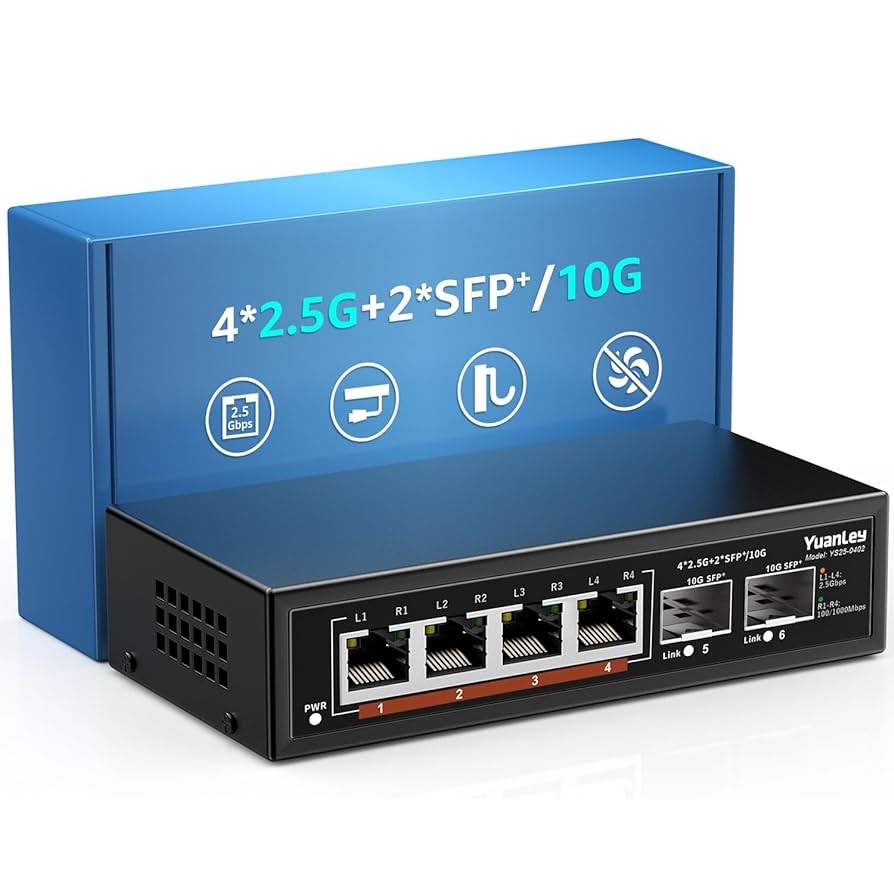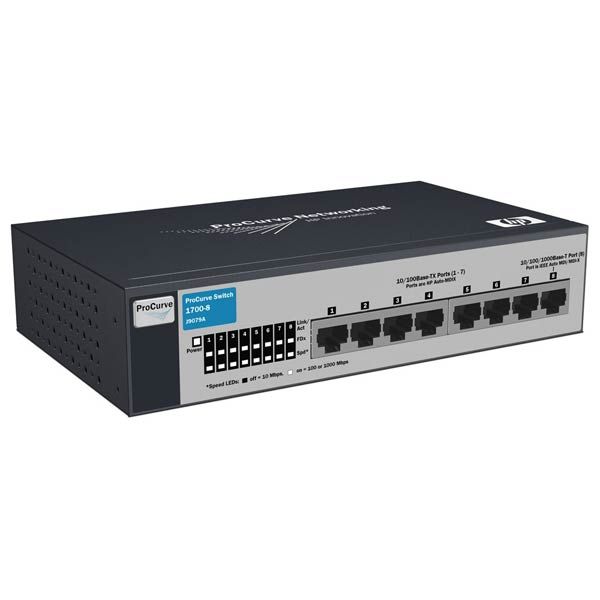Introduction
Switches play a crucial role in computer networks. They are essential devices that connect multiple devices within a Local Area Network (LAN). Whether it’s a small office or a vast corporate environment, switches enable seamless communication between computers, printers, and servers. This article delves into the various aspects of computer switches, covering their types, functions, and importance in modern networking.
What is a Switch?
A switch is a networking device that connects various devices in a network. Unlike simple devices such as hubs, switches are intelligent. They can read data packets and determine the best way to forward them to the correct destination. This increases efficiency and reduces data collisions. When data is sent from one device to another, the switch examines the data’s destination address. It then forwards the data to the correct device instead of broadcasting it to the entire network.
Switches operate at the Data Link Layer of the OSI model. This means they handle MAC addresses, which are unique identifiers assigned to each device on a network. By using MAC addresses, switches ensure that the correct data reaches its intended recipient quickly and efficiently.
The Role of Switches in Networking
Switches are vital for creating a functional network. They help manage data traffic to prevent congestion. Without switches, data would travel to all devices, causing confusion and slowdowns. Every communication would compete for bandwidth, leading to frequent data loss and slower performance. This inefficiency highlights the need for switches in a network.
The role of switches extends to managing data streams. They can handle many connections simultaneously. This capability is particularly important in busy environments where many users are sharing network resources. By managing these connections, switches improve overall network productivity.
Switches also enhance network security. They can isolate segments of the network. By doing this, they ensure that sensitive data remains protected. Only authorized users can access certain parts of the network, which reduces the risk of data breaches.
Types of Switches
Switches come in various types, including unmanaged, managed, and layer 3 switches. Each type has distinct features, making it suitable for different networking needs.
- Unmanaged Switches: These are plug-and-play devices. They are easy to set up and use, making them ideal for home networks or small offices. They come with fixed configurations and do not require management. Unmanaged switches do not allow network administratively control over devices connected to them.
- Managed Switches: These switches provide users with greater control. Users can configure, manage, and monitor the network. Managed switches allow for the designation of VLANs (Virtual Local Area Networks). This promotes security and performance. They also support protocols for network monitoring and management.
- Layer 3 Switches: These switches combine the functionalities of traditional switches with routing capabilities. They can perform some of the functions of routers. This allows them to manage traffic between different networks effectively. Organizations often use layer 3 switches in large and complex networks.
Advantages of Using Switches
Switches offer several advantages over other networking devices. One of the main benefits is improved efficiency. Switches reduce data collisions by directing data to specific devices instead of broadcasting it. This feature helps maintain a smooth and fast network.
Another significant advantage is scalability. Switches make it easy to add more devices to the network. This characteristic is essential for growing businesses that require additional resources. As more devices connect, switches can handle increased traffic without compromising performance.
Moreover, switches enhance security. By segmenting networks, switches help protect sensitive data. Network administrators can implement security measures and control access to specific resources. This reinforces security protocols and safeguards data integrity.
Why Switches are Essential in Modern Networking
In today’s digital age, businesses rely heavily on robust networking solutions. Switches are indispensable in achieving a functional network. They ensure efficient communication between devices, which is vital for daily operations.

Moreover, the rise of remote work has increased the need for reliable networking solutions. Switches can effectively support numerous devices, making them perfect for dispersed work environments. As employees work from various locations, strong networking tools are essential for maintaining productivity.
Furthermore, the complexity of modern applications demands advanced networking equipment. Many applications require real-time data processing and high-speed connectivity. Switches can handle these requirements efficiently. They support multiple data streams without causing slowdowns.
Setting Up a Network Switch
Setting up a switch is a straightforward process. However, some basic steps ensure the installation is successful. First, choose a suitable location for the switch. It should be close to the devices it will connect but also in a well-ventilated area to prevent overheating.
Next, connect the power supply to the switch. Once powered on, connect the network cables to the switch ports. Each port corresponds to a device in the network. Use Quality Ethernet cables for the best performance.
For managed switches, logging into the administration console will be necessary. This allows users to configure settings tailored to their network needs. Users can define VLANs, set up security protocols, and monitor traffic accordingly.
Best Practices for Managing Switches
Managing switches effectively optimizes network performance. One fundamental best practice is to routinely monitor switch performance. Network administrators should keep an eye on traffic patterns to identify bottlenecks. This proactive approach helps prevent issues before they arise.
Another practice is to keep firmware updated. Manufacturers release updates to improve performance and security. By regularly updating the switch’s firmware, users can benefit from the latest enhancements.
Additionally, creating documentation for network configuration is essential. Keeping an organized record helps network administrators manage changes effectively. If problems arise, documentation can assist in troubleshooting and pinpointing the cause.
Troubleshooting Common Switch Issues
Despite their reliability, switches can experience issues. Understanding common problems and their remedies can save time and frustration.
One common issue is connectivity problems. If a device cannot connect to the network, the first step is to check the cables. Loose or damaged cables can cause disruptions. Ensure all cables are securely connected and show no signs of wear.
Another frequent problem is slow network speed. Several factors can contribute to this issue. Start by examining the network for overloaded switches or devices. If too many devices connect to a single switch, it can lead to congestion. Distributing devices across multiple switches can resolve this problem.
Security concerns also arise with switches. If unauthorized users access the network, it can lead to data breaches. Implementing VLANs and regularly updating passwords can help protect the network from intruders.

Future Trends in Switch Technology
As technology advances, switches continue to evolve. New trends are shaping the future of switch technology. For instance, software-defined networking (SDN) is gaining popularity. SDN separates the control plane from the data plane. This allows for more flexibility and dynamic management of network resources.
Another trend is the move towards 5G technology. With the rise of IoT devices, demand for high-speed connectivity is increasing. Switches must adapt to meet these requirements. This adaptation may involve enhanced bandwidth capabilities and support for advanced protocols.
Additionally, there’s a growing emphasis on energy-efficient networking. As concerns about environmental impact grow, companies are seeking eco-friendly solutions. Switch manufacturers are responding by designing energy-efficient devices. These switches in computers consume less power while delivering high performance.
Conclusion
In summary, switches in computers are vital components of modern networking. They connect various devices and enhance communication within networks. With different types of switches available, users can select devices that meet their specific needs.
Switches improve network efficiency, scalability, and security. They play a vital role in supporting business operations and enabling seamless communication. Understanding how to set up, manage, and troubleshoot switches in computers is essential for maintaining a robust network.
As technology advances, switches in computers will continue to adapt and evolve. Being informed about the latest trends and best practices will help network administrators maximize their effectiveness. Embracing these changes will ensure organizations remain connected and efficient in an ever-evolving digital landscape.

